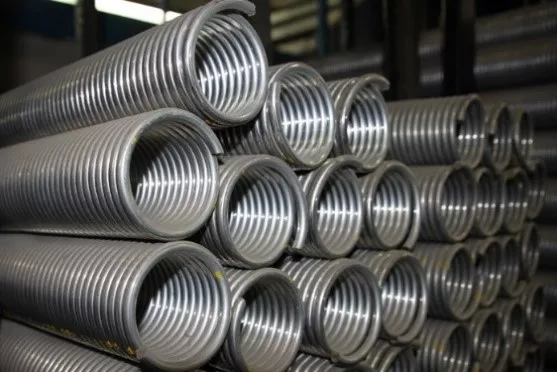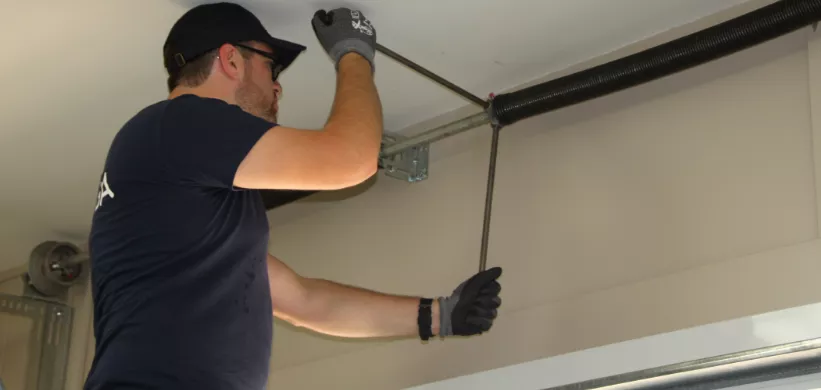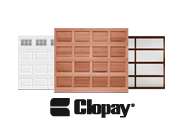You probably don’t think much about your garage door springs. You may not even be aware of them unless you’ve had to deal with replacing or repairing them before. The spring system in your garage door is a necessary part of the entire system because it stores the weight of the garage door so that it’s easy to lift for man or machine.
Whether you realize it or not, the torsion springs (or extension springs) are the most important part of the garage door system. This means you have to know how it works and what it needs from you to keep things working properly.

Garage door springs 101
Torsion springs are the more popular type of spring system installed on most garage doors for residential use. Extension spring systems are available, but they are installed overhead and hooked to the tracks, which makes them noisier, less efficient, and more dangerous. Both types of spring systems will do the job, but torsion springs just work so much better.
While extension springs are installed on the track, a torsion spring will be installed above your garage door on the front wall of the garage. It is also installed in a shaft and attached to an anchor plate for extra stability and safety. If a torsion spring breaks, it’s contained. If extension springs break, they can cause a lot of damage because they could go just about anywhere if not properly equipped with safety cables.
Their placement makes torsion springs quieter, too. Plus, this system transfers the energy right to the center of the door, which allows for a smoother, more efficient operation. If the door is out of balance, extension systems may create excessive shaking and vibrating in the operation of the door.
A closer look at the torsion spring
Torsion springs are found in a lot of applications beyond garage doors. The coil‑shaped spring uses its torsion, or twisting, to store mechanical energy to balance the weight of the door so that it is easy to open by hand or with your opener. This system offers a much more streamlined, efficient operation than the old counterweight systems from five or six decades ago
It takes the whole system
Springs are among the most important parts of your door, but they aren’t the only part. There are many working elements of a garage door. Once your spring has been mounted and installed, it will be stored in a shaft, which is also connected to a drum. The drum holds the lift cable, which also attaches to the door at the base. In order for the door to open and close effectively, every single piece has to do its job. It’s handy to think of it like a chain:
Bracket + Lift Cable + Drum + Shaft + Torsion Spring
When the door is closed, the energy is held in the spring. Once you open the door, the energy is released and the spring will relax until the door is closed again.
So, how much does a garage door really weigh?
Depending on the size and thickness of your garage door, it could weigh as much as 300 pounds or more. To help you get a better idea of what your door might weigh, here are some specifics:
- Single garage door, 1 ¾” steel, with polyurethane insulation. Average weight is two pounds per square foot. If you have windows, they add 2 ½ to 3 pounds for each one. This door weighs approximately 150‑160 pounds or 68‑73 kilos.
- Double door, same parameters as before, except this door is 16 feet wide instead of nine feet. This door will weigh 280-295 pounds or 127-135 kilos.
- Single garage door, 2” steel, no insulation. The average weight is about 1 ½ pound per square foot. That means the door would weigh 125‑130 pounds or 57‑59 kilos.
- Double garage door, same as above. This door, at 16 feet wide, would weigh 280‑295 pounds, or 102‑107 kilos.
Ask the Pros: Your Questions Answered
Curious to learn more about torsion springs and garage door systems? We’re here to help. Check out the most commonly asked questions below.
#1: Does it matter which side a spring is installed on?
If you only have a single garage door spring, it can go on either side of the door. Manufacturers make both models readily available because some people do need both. Its location doesn’t affect how well it works.
#2: How do I know how many springs I need?
Your garage door technician will take care of this. However, for your reference, a single door usually means a single spring. A double door generally requires two springs. For reference, a single door is usually 9x7 feet while a double door will typically measure 16x7 feet.
#3: Are my springs rustproof?
Torsion springs are usually made in one of two ways. The most common include about 35 or 40 percent zinc, which is added for galvanization. If you live in a humid climate, you might want to consider the other style, which is 100% galvanized for durability and longevity.
#4: How long is my spring system going to last?
Most garage door springs are rated for up to 10,000 cycles. A cycle includes both closing and opening the door. Typical use of 2‑3 times per day gives you an expected lifespan of about seven years, although it might lose some strength over time. If your door is used more frequently, consider upgrading to a spring that is designed for 20,000‑25,000 cycles.
#5: Do my springs need routine maintenance?
You can extend the life of your torsion springs by regularly lubricating all of the metal parts a couple of times a year. If you use your door more, you should do maintenance more, as well. Lubrication of the springs helps reduce noise and protects against corrosion. Petroleum‑based lubricants work well for this.
#6: Are my springs broken?
You can check to see how your springs are working quite easily. Simply disconnect your electric opener by pulling the emergency release cord. Then, use one hand to lift the door. The door should feel like it weighs 10 pounds or less. If it doesn’t, or if it’s not working correctly, stop using the door and call for service immediately.
#7: What if I don’t have room for torsion springs?
There are some instances where the door clearance may prevent torsion springs from being mounted in the front above the door. If there is less than a foot of room, the technician might opt to put the spring in the back of the garage. In this situation, they may also suggest double horizontal tracks for stability.
Leave Repairs to the Experts
Everyone has probably heard this before, but torsion springs and extension springs are under a high amount of tension and pressure. They are dangerous to work on without the right tools and knowledge. Residents in the Kingston area or in Belleville can contact us for all of their garage door and spring repair needs. Just give us a call at 613‑547‑4566 (Kingston) or at 613‑966‑5655 (Belleville). We can repair your broken parts and provide you with all of the information that you need. If you’d like, ask for your own detailed quotation, which we can send you via email.










Add new comment